What Makes a posture a Yin Yoga Pose?
By Bernie Clark
September 15, 2023

In a recent post in the Yin Yoga Forum, a question was asked whether a particular posture was really a yin yoga pose or not. Included with the post was a photo, similar to the one shown here, of a student in a deep back bend supported by suspended silks. (To see the actual photo, visit the Forum post.) The author of the post felt that this pose was too extreme to be considered “yin” and questioned if anyone would gain any benefits from doing such a pose in a yin yoga manner. She admitted she could never do this pose.
So—is this a yin yoga pose or not? What follows was my reply.
Firstly, let’s try to avoid judging any person or posture by its appearance. Aesthetics is irrelevant. Instead, let’s ask, “What sort of experience is the person in the pose having?”
Secondly, let’s try a definition of what makes a posture a yin pose. There are a few ways we could go, but here is one view.
“A functional yin yoga posture is one that is held, statically, for a long period of time without muscular engagement.”
“Statically” means, we don’t move, or at least not very much. “Long period of time” can mean staying in the pose for 2 or 3 minutes up to 10 to 20 minutes. “Without muscular engagement” means we don’t have to work at staying in this shape. From a “functional” point of view, a yin yoga pose should have the intention of creating a stress in a targeted area. If a posture meets these criteria, it is a yin yoga pose.
What is a “targeted area” and what do we mean by “intention”? The intention is the reason we are doing the pose. The targeted area is the region of the body that we want to affect. For example, if the intention of a posture is to create a sense of stretching or elongation in a particular region of the body, or alternately if the intention is to create a sense of compression in a specific area, and that sensation in fact does arise, then the intention of the posture has been achieved. It is a functional pose.
Does the posture in the picture meet the criteria for being a yin yoga pose? We don’t know! We would have to ask the student. Firstly, why is she doing this pose? What is the intention? If she says she is trying to target the front side of her body for a relaxed, elongating stretch, we can then ask, “What are you feeling?” If she answers, “I feel a lovely stretch there”, then she is doing the pose properly. Next, can she remain in this pose for a long time (2 minutes or more), without any muscular effort? We could also ask, “are you free of any pain?” If she answers “yes” then it would seem to meet all the conditions of a yin yoga pose.
For her!
That last bit is important. I could not do this posture and if I could, I certainly would not be able to stay in it for very long. For me, it would not be a yin yoga posture, but some form of medieval punishment. It would not be pain-free either. I suspect for most people, this is not an accessible position and could not be held for any length of time. So, for most people, this would not be an appropriate yin yoga pose. As a yin yoga teacher, I would not suggest it for my students. But then, I do not teach aerial yoga and don’t have the equipment to offer my students anyway, so that point is rather moot.
For this student, this may well be a delightful yin yoga posture and if it works for her, that is wonderful. Just don’t expect this to work for every body.
